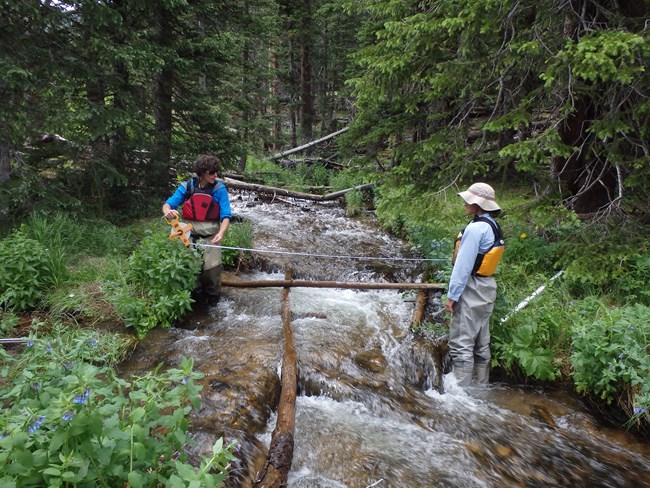
Importance/IssuesThe Stream Ecological Integrity protocol addresses multiple Rocky Mountain Network vital signs: surface water dynamics, ground water dynamics, freshwater communities, invasive/exotic aquatic biota, invasive/exotic plants, water chemistry, and focal species (beaver). The protocol will be implemented in five Rocky Mountain Network parks, with initial effort focusing on Glacier National Park. Streams and rivers are fundamental components of nearly every Rocky Mountain Network park, and their ecology is both intimately linked with and reflective of the watersheds they drain. A defining feature of streams and rivers is their dependence on the landscape for inputs of energy and nutrients; streams integrate all systems within a landscape. Streams also support a broad spectrum of ecological services, including wildlife habitat, nutrient processing, hydrologic cycling, and multiple socioeconomic functions for humans (e.g., water sources, fisheries, recreation). Since streams are typically sensitive to stressors at both local and landscape scales, they are one of the most useful types of ecosystems for longterm ecological monitoring in the Rocky Mountain Network. Survey-site data will be used for making statistically valid inferences about stream condition across each of the Rocky Mountain Network parks, as well as population-scale, long-term trend assessments. Sentinel sites will be used for more intensive (both in terms of sampling frequency and instrumentation) monitoring to quantify loadings, site-scale trend, and possible mechanisms. Sentinel sites will occur on reaches as required by regulatory programs, in existing long-term stream sampling locations, at key confluences, and/or at watershed pour points. Preliminary Monitoring Objectives
Potential Measures
Protocol Development and StatusThe Rocky Mountain Network Streams protocol methods are largely derived from well-established and existing protocols developed by Rocky Mountain Network partners, including the U.S. Environmental Protection Agency (EPA), the U.S. Geological Survey (USGS), and the Montana Department of Environmental Quality (MT DEQ). The application of standardized protocols across the Rocky Mountain Network and partner stream monitoring sites facilitates comparison of streams and rivers within an ecoregion. A link to the Rocky Mountain Network streams protocol is provided below. We monitor streams annually using this protocol in Glacier National Park, Grant-Kohrs Ranch National Historic Site, Little Bighorn Battlefield National Monument, and Rocky Mountain National Park. In the future, we will implement stream monitoring in Great Sand Dunes National Park and Preserve as well. Parks This Protocol is Monitored At
Vital Signs This Protocol Monitors
Reports & PublicationsSource: NPS DataStore Saved Search 2219. To search for additional information, visit the NPS DataStore. Source: NPS DataStore Saved Search 2168. To search for additional information, visit the NPS DataStore. Source: NPS DataStore Saved Search 1311. To search for additional information, visit the NPS DataStore. |
Last updated: February 23, 2024
